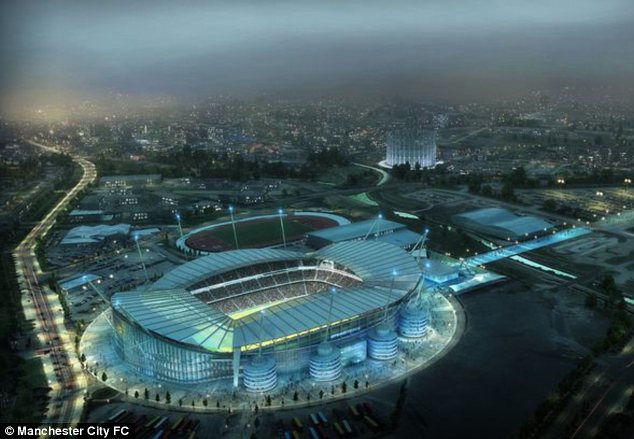Manchester City have been given the go-ahead for a huge extension to the Etihad Stadium, taking its capacity from 47,620 to 62,170.
The council’s planning committee has approved the plan to add an extra 6,250 seats at both ends of the ground, as well as a further 2,000 seats around the pitch.
The Manchester Evening News reports that a final decision will be made at a meeting on 13 February, and provided it gets the green light it will become the second biggest club stadium in England, behind Manchester United’s Old Trafford currently, which currently holds 75,000.
The plan states: “The expansion of the stadium will provide enhanced facilities which will help to create a stadium of national and international profile and improve the visitor experience. The appearance of the south and north stands and create a more prominent landmark feature at the centre of the Etihad Campus and East Manchester.
“The proposal will create job opportunities, some of which will be available for local residents and business, during the construction and operation of the expanded stadium.”
The Etihad stadium was originally built to stage the 2002 Commonwealth Games. The cost to the tax payer of the original stadium, complete with athletics track, was £112million. After some cajoling, Manchester City, agreed to become tenants of the new venue. The cost of converting it to a football venue – without running track – was reported to be £40million – with the tax payer footed the bill to the tune of £22million.
I suppose we should be grateful that at least this time around, the public are not being asked to pay for the extension. Nevertheless, the fact that the stadium was effectively donated to a club now owned by Sheikh Mansour, someone whose personal wealth is estimated to be £20 billion and whose family fortune is estimated at $1trillion, does rather stick in the craw.







